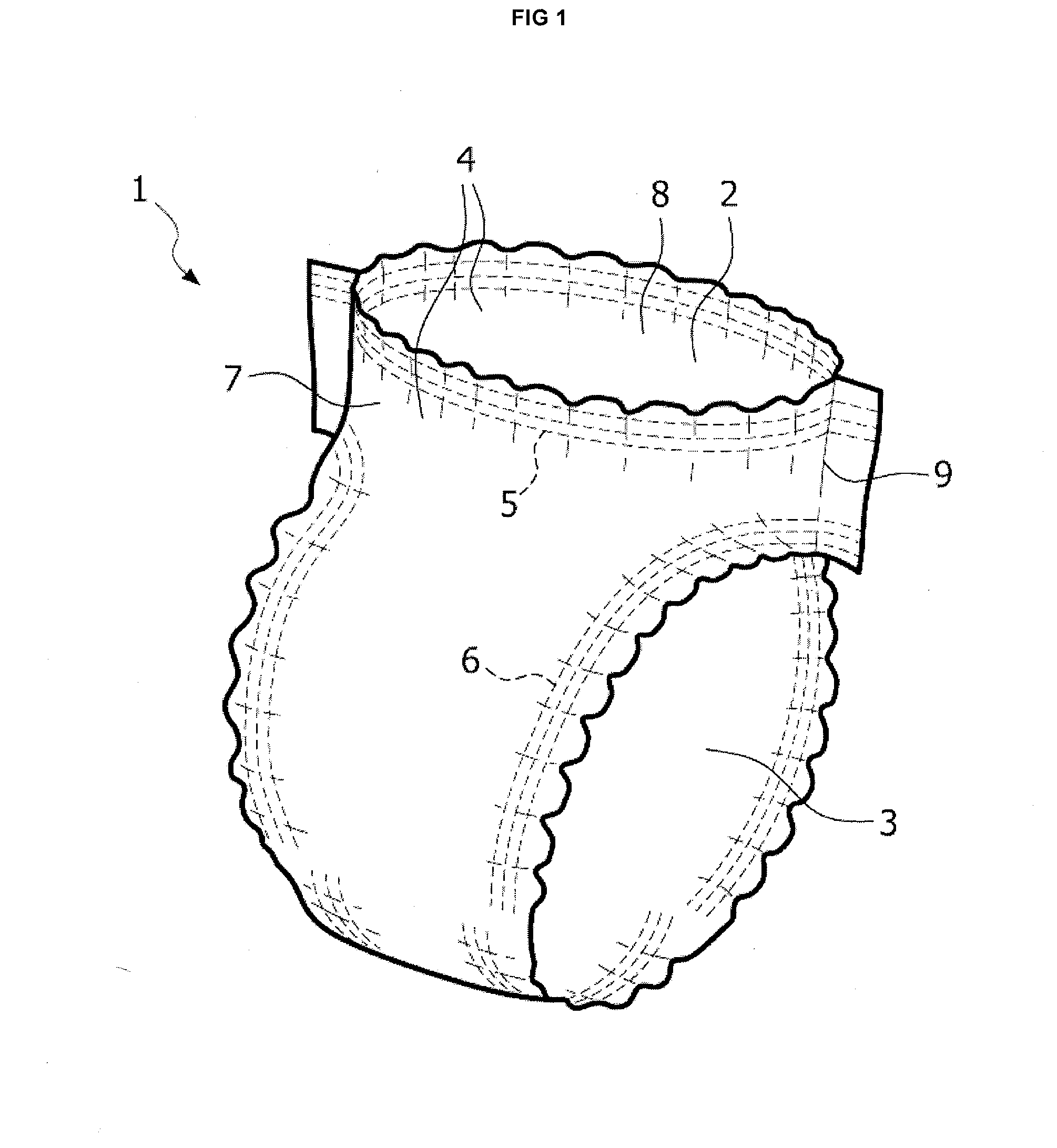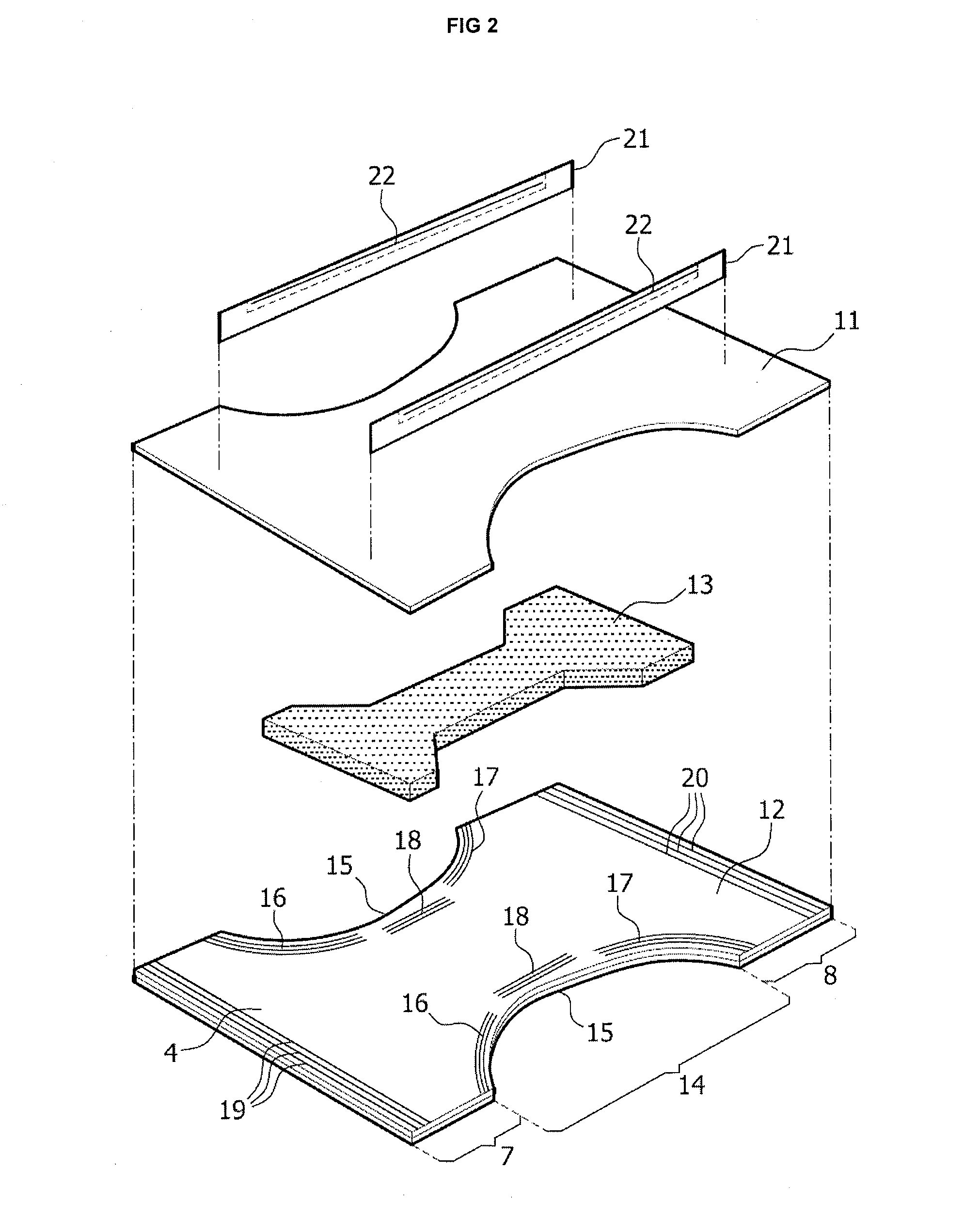Disposable undergarment with improved elasticised sections
a technology of elasticised sections and undergarments, which is applied in the field of disposable undergarments, can solve the problems of deteriorating the comfort of wearing undergarments, not presenting an optimal resistance to bodily fluid leakage, and causing rash
- Summary
- Abstract
- Description
- Claims
- Application Information
AI Technical Summary
Benefits of technology
Problems solved by technology
Method used
Image
Examples
Embodiment Construction
[0031]As used herein, the singular forms “a”, “an”, and “the” include both singular and plural referents unless the context clearly dictates otherwise. By way of example, “an elastic member” refers to one or more than one elastic members.
[0032]The terms “comprising”, “comprises” and “comprised of” as used herein are synonymous with “including”, “includes” or “containing”, “contains”, and are inclusive or open-ended and do not exclude additional, non-recited members, elements or method steps.
[0033]The terms “attach” and “attached” as used herein are synonymous with their counterparts of the terms “join”, “fasten”, “affix”, “secure”, “glue”, “bind” and “link”. Typical examples of methods used to attach two materials to each other are via the use of an adhesive such as a pressure sensitive adhesive or via the use of ultrasonic or other thermal, mechanical or thermo-mechanical bonding techniques.
[0034]The recitation of numerical ranges by endpoints includes all numbers and fractions sub...
PUM
 Login to View More
Login to View More Abstract
Description
Claims
Application Information
 Login to View More
Login to View More - R&D
- Intellectual Property
- Life Sciences
- Materials
- Tech Scout
- Unparalleled Data Quality
- Higher Quality Content
- 60% Fewer Hallucinations
Browse by: Latest US Patents, China's latest patents, Technical Efficacy Thesaurus, Application Domain, Technology Topic, Popular Technical Reports.
© 2025 PatSnap. All rights reserved.Legal|Privacy policy|Modern Slavery Act Transparency Statement|Sitemap|About US| Contact US: help@patsnap.com



